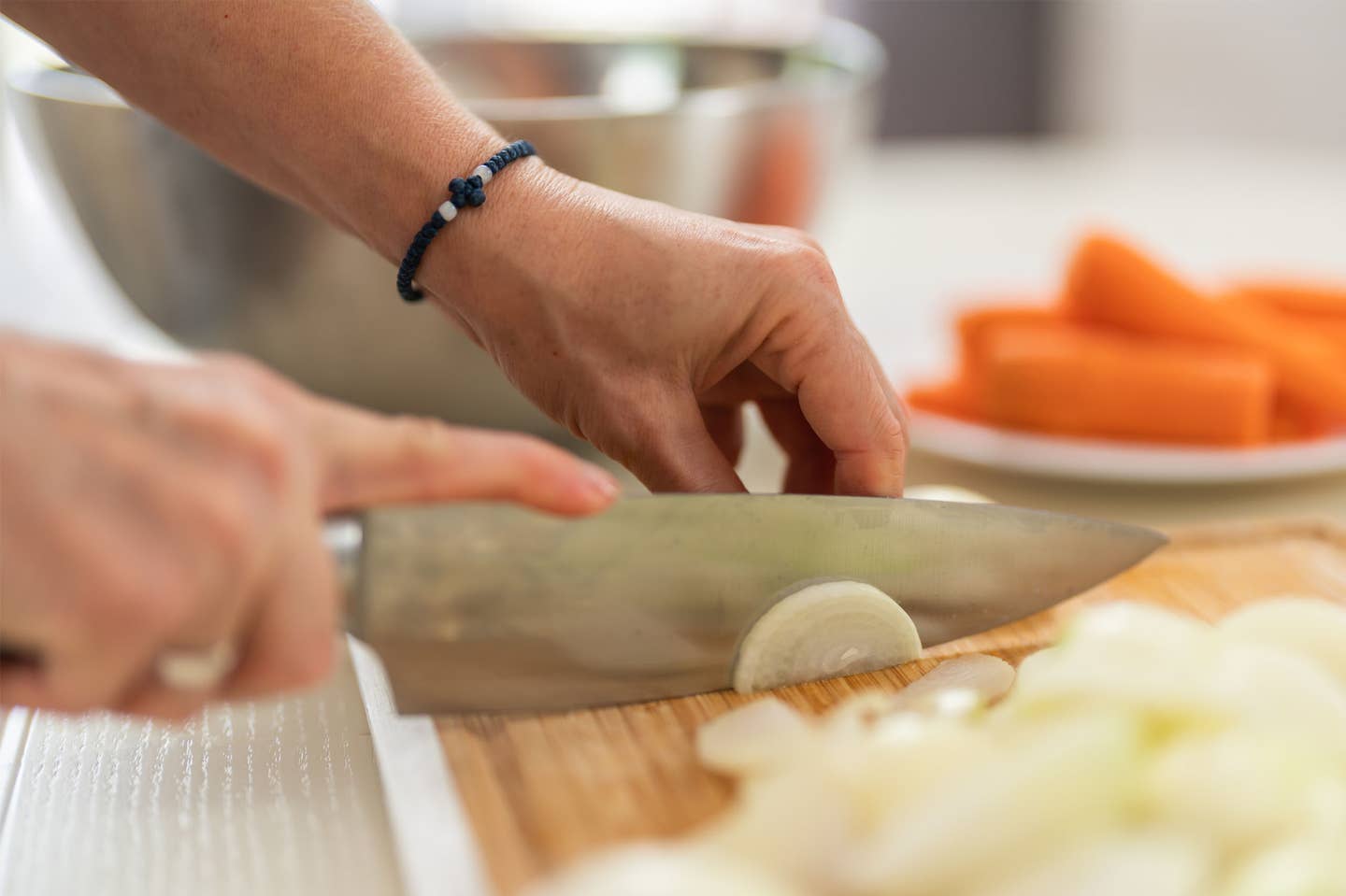
Mirepoix 101: The Flavor-Boosting Trio Every Cook Should Know
Ready to embrace the chef’s secret to extra-delicious recipes? Say hello to mirepoix, a calibrated blend of chopped onions, carrots, and celery. Although mirepoix (pronounced “meer-pwah”) can trace its pedigree back to the golden age of French cuisine, the savory mixture is easy to prepare—in fact, you’ve probably already made it as part of a casserole, stew, pasta sauce, or soup.
Mirepoix is an especially good thing to know about and use in a whole-food, plant-based kitchen because it adds depth and complexity to recipes and magnifies flavors without animal products, oil, or salt. Read on for everything you need to know about the culinary wonder.
What Is Mirepoix?
The term “mirepoix” is said to have been coined by the chef of the Duke of Mirepoix (a town in Southwestern France) in the 18th century to describe a sauce made with finely diced aromatic vegetables. By the 19th century, “mirepoix” had evolved into a word to describe a specific trio of vegetables—onions, carrots, and celery—used to build a flavor foundation in French cuisine. That usage stuck, and today, mirepoix is culinary shorthand in English as well as French for the aromatic blend.
The vegetable ratio for a classic mirepoix is 2:1:1, two parts onions, one part carrots, and one part celery, so no one ingredient overwhelms another. The onions’ pungency plays off the sweet earthiness of the carrots, while celery adds a fragrant, grassy note, creating a delicious base that enhances all the other components in a savory recipe.
Other cuisines use similar aromatic medleys as flavor bases for dishes. There’s battuto (mirepoix plus garlic) in Italian cuisine; the Holy Trinity (equal parts onion, celery, and green bell pepper) in Cajun cooking; and sofrito (onions, peppers, garlic, tomatoes) in Spanish and Latin American cuisines.
Mirepoix Master Formula
You can buy mirepoix at the store (more on that below), but it’s also easy to prepare your own mix at home. Here’s how to make it.
Chop evenly: While you don’t have to chop the vegetables into perfect, tiny cubes the way chefs do, it’s important that all the components be cut the same size so that they cook evenly. Pulsing the veggies in a food processor is one way to do this.
Get the ratio right: You want 2 parts chopped onion, 1 part chopped carrot, and 1 part chopped celery (so if a recipe calls for 2 cups mirepoix, you need 1 cup chopped onion plus ½ cup each of chopped carrot and celery).
Storage: Prepped mirepoix will keep three to four days in the fridge in an airtight container. You can also freeze it in 1-cup portions for future use.
How to use mirepoix as a flavor base: The classic cooking technique calls for sweating the vegetables in oil over medium low heat so they soften and release their aromatic properties. For an oil-free approach, place all the ingredients in the pan, then cook over medium-low heat 4 to 6 minutes or until vegetables are softened, stirring occasionally and adding water, 1 to 2 Tbsp. at a time, as needed to prevent sticking.
Buying Prepared Mirepoix
Don’t feel like chopping? Pre-cut mirepoix is available both fresh and frozen in most supermarkets. Here’s what to look for.
Fresh mirepoix: Fresh mirepoix is usually sold in 2-cup tubs, which is typically enough for two recipes that serve four people. Always check the “Best before” date and give the tub a shake to make sure the ingredients are still loose and fresh, not sticky and damp or visibly dry.
Frozen mirepoix: Frozen mirepoix won’t have the same crisp snap as fresh, but it’s budget-friendly and convenient. Give the bag a quick squeeze to check that the small-cut veggies aren’t stuck together in an icy clump—a sign that they may have thawed and been re-frozen.
3 Freestyle Ways to Use Mirepoix
Want to taste the real flavor-boosting power of mirepoix? Try one of these easy hacks that take everyday ingredients to the next level.
Vegetable Broth
Add robust veggie flavor to store-bought broth by simmering 1 cup fresh or frozen mirepoix with 1 quart (4 cups) broth in a covered pan for 15 minutes. Strain and use broth as directed in recipes. Reserve the mirepoix veggies for use in another recipe.
Pasta Sauce
Jazz up store-bought pasta sauce: In a saucepan, stir 1 cup mirepoix into 2 cups prepared pasta sauce. Simmer, covered, 10 to 15 minutes or until vegetables are tender.
Grains
When cooking rice, quinoa, and other grains that cook for 10 minutes or more, add an equal amount of mirepoix to the pot at the start of cooking time. (So for 1 cup of grains, you would add 1 cup of mirepoix.)
Soups and Stews that Start with Mirepoix
These lusciously hearty dishes showcase just what prepared mirepoix can do as a flavor base.
- Potato-Kale Black-Eyed Pea Soup
- Black Bean Chili with Quick-Pickled Avocado
- Butternut Squash and Red Lentil Soup
- Coconut Curry Noodle Bowls with Mushrooms
- Trumpet Mushroom, White Bean, and Gnocchi Stew
To learn master whole-food, plant-based culinary techniques at home, check out Forks Over Knives Cooking Courses today!

About the Author

About the Author
Mary Margaret Chappell
Join our mailing list
Get free recipes and the latest info on living a happy, healthy plant-based lifestyle.
By providing your email address, you consent to receive newsletter emails from Forks Over Knives. We value your privacy and will keep your email address safe. You may unsubscribe from our emails at any time.